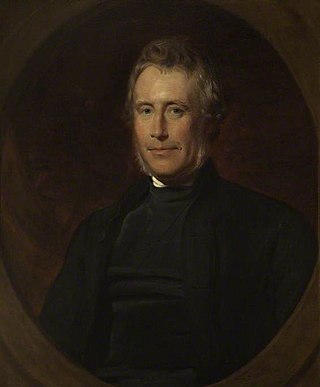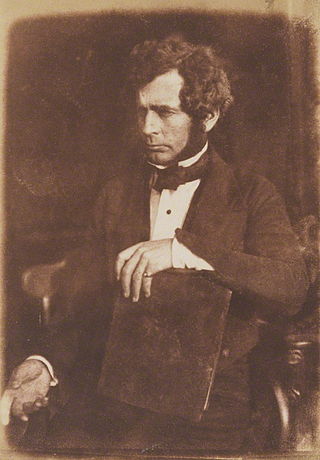
Mountstuart Elphinstone was a Scottish statesman and historian, associated with the government of British India. He later became the Governor of Bombay where he is credited with the opening of several educational institutions accessible to the Indian population. Besides being a noted administrator, he wrote books on India and Afghanistan. His works are pertinent examples of the colonial historiographical trend.

John Singleton Copley, 1st Baron Lyndhurst, was a British lawyer and politician. He was three times Lord High Chancellor of Great Britain.

Earl of Dalhousie, in the County of Midlothian, is a title in the Peerage of Scotland, held by the Chief of Clan Ramsay.

Earl of Gosford is a title in the Peerage of Ireland. It was created in 1806 for Arthur Acheson, 2nd Viscount Gosford.

Lord Elphinstone is a title in the Peerage of Scotland created by King James IV in 1510.

Lord Torphichen or Baron Torphichen is a title in the Peerage of Scotland. It was created by Queen Mary in 1564 for Sir James Sandilands, with remainder to his heirs and assigns whatsoever. John Horne Stevenson, then Marchmont Herald, wrote in “Dignities” : That the barony of Torphichen was the only possible exception to the general rule that peerages cannot be transmitted and must be inherited. As such, it is the only peerage title that may potentially be legally separated from the bloodline, allowing it to be assigned or passed on to heirs who are not direct descendants. However, the legal status of this is uncertain, as it has not yet been tested and ruled on by the courts.

Earl Cathcart is a title in the Peerage of the United Kingdom.

Francis Napier, 10th Lord Napier and 1st Baron Ettrick, was a British polyglot, diplomat and colonial administrator. He served as the British Minister to the United States from 1857 to 1859, Netherlands from 1859 to 1860, Russia from 1861 to 1864, Prussia from 1864 to 1866 and as the Governor of Madras from 1866 to 1872. He also acted as the Governor-General of India from February to May 1872.

Major-General Sir John Malcolm GCB, KLS was a Scottish soldier, diplomat, East India Company administrator, statesman, and historian.

Sir Walter Elliot, KCSI was a British civil servant in colonial India. He was also an eminent orientalist, linguist, archaeologist, naturalist and ethnologist who worked mainly in the Presidency of Madras. Born in Edinburgh, he studied at the East India Company College at Haileybury and joined the East India Company's civil service at Madras in 1820 and worked on until 1860. He was invested Knight Commander of the Order of the Star of India (KCSI) in 1866.

Alexander Edward Murray, 6th Earl of Dunmore was a Scottish peer. He was the son of George Murray, 5th Earl of Dunmore.
Alexander Mountstuart Elphinstone, 19th Lord Elphinstone and 5th Baron Elphinstone, is a Scottish peer in both the Peerage of Scotland and the Peerage of the United Kingdom.

Robert John Eden, 3rd Baron Auckland, styled The Honourable Robert Eden from birth until 1849, was a British clergyman. He was Bishop of Sodor and Man from 1847 to 1854 and Bishop of Bath and Wells from 1854 to 1869.

William Buller Fullerton Elphinstone, 15th Lord Elphinstone and 1st Baron Elphinstone, known as William Elphinstone until 1861, was a Scottish Conservative politician.

Lucius (McEdward) O'Brien, 13th Baron Inchiquin, known as Sir Lucius O'Brien, 5th Baronet from 1837 to 1855, was an Irish politician and nobleman. He is remembered respectfully in County Clare for his relief work in the famine years.
George Rushout, 3rd Baron Northwick, was a British Conservative politician.

George Buist FRSE FRS FRSSA FGS LL.D. (1805–1860) was a Scottish journalist and scientist. He was the editor of The Bombay Times and Journal of Commerce which his successor Robert Knight renamed The Times of India. He is described "as India's foremost man of letters".

John Paulet, 14th Marquess of Winchester, styled Earl of Wiltshire until 1843, was a British peer and soldier.
Governor Elphinstone may refer to:
Lieutenant Colonel William Henry Wellesley, 2nd Earl Cowley was an English aristocrat and soldier.














